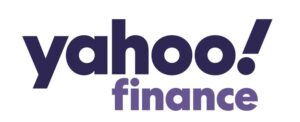By Eleanor Cash
With the end of spring semester approaching, college seniors across the country are looking forward to wearing their caps and gowns and receiving their diplomas. Soon after flipping their tassels, however, many of these new graduates will be forced to confront a growing national problem: repaying their student loan debt.
Student loans place only second to mortgage debt in the consumer debt category. In 2018, 69 percent of students took out loans, and graduated with an average debt of $29,800. To paint a broader picture, Americans owe over $1.5 trillion in student loan debt.
Students searching for ways to ease the financial burdens of a college education are increasingly applying for scholarships. According to the College Board, from 2014-2015, approximately two-thirds of full-time college studentsused scholarships and grants to help pay for school. However, even with billions of dollars up for grabs each year, the scholarship hunt is becoming more competitive.
“It was super stressful. I remember talking to my guidance counselor and she was like you need to apply for three scholarships a week,” said Alexis Crewse, a 2017 graduate from the University of Georgia. “As a high school student, I worked 20 hours a week, I played sports, I was involved in extracurriculars, I needed to make good grades to keep my college acceptances on the table.”
According to the Office of Undergraduate Admissions website, UGA gave more than $7 million in scholarships and awardsto undergraduate students last year. At a university with over 28,000 undergraduate students, it may seem hard to know where to even begin looking for scholarships, or to even know if achieving a scholarship is possible.
Most universities including UGA provide comprehensive lists of scholarships and online search tools to help find them, but the sheer numbers can be overwhelming. Crewse, however, suggested that students should use those numbers to their advantage rather than become intimidated.
“If you have time, use the spaghetti-at-the-wall tactic. Throw it all at the wall and see what sticks, because there’s a lot out there and you never know where you’re going to shine as an applicant,” said Crewse. “Be diligent and ask around. There’s money out there and people want to give it away.”
Karen Sterk has served as the executive director of the Jeannette Rankin Women’s Scholarship Fund (JRF) since 2015. The fund has raised over $3 million in scholarships and has assisted more than 1,000 women since the first scholarship was awarded in 1978.
The scholarships serve non-traditional students, specifically women aged 35 and older. Sterk noted that these scholarships also are unique because they can be used for daily living expenses like buying food or paying for car and home expenses.
“As every student knows, it costs more than just tuition and books to go to school,” said Sterk.
As someone who reviews hundreds of scholarship applications a year, Sterk has found a few qualities that make an applicant stand out. Her number one tip: present a clear picture of future aspirations.
“Two biggest things: they have goals, they’ve achieved goals, and they know what they want to do,” said Sterk. “Grit and perseverance are those things that we talk about and they show through their life experiences and what they share with us on the page.”
Sterk recommended approaching the application process from a place of authenticity.
“Tell your story. It’s really . . . the story that supports what you’re saying your goals are that get us,” said Sterk.
Eleanor Cash is a journalism student at the University of Georgia.





